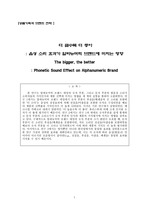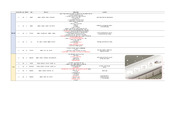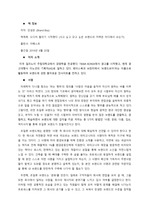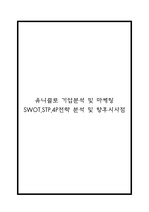

-
미리보기
소개
상품기획과 브랜드 전략<음성 소리 효과가 알파뉴머릭 브랜드에 미치는 영향>목차
없음본문내용
[상품기획과 브랜드 전략 ]
더 클수록 더 좋아
: 음성 소리 효과가 알파뉴머릭 브랜드에 미치는 영향
The bigger, the better
: Phonetic Sound Effect on Alphanumeric Brand
초 록>
본 연구는 알파뉴머릭 브랜드 네임의 숫자 부분, 그리고 문자 부분의 발음상 소리가 소비자들의 가치인식과 제품 선택에 미치는 영향을 세 개의 실험을 통하여 고찰하였다. 연구 1에서는 알파뉴머릭 브랜드 네임에서 숫자 부분이 후설음/폐쇄음의 큰 소리를 포함하면 ‘더 크다’는 음성의 상징효과에 의해 전설음/마찰음을 포함한 숫자로 구성되었을 때보다 제품의 선택률과 가치인식이 더 높게 나타났다. 이것은 기존 연구에서 증명되었던, 테크니컬 카테고리 내에서 일반적인 ‘더 높을수록 더 좋다’ 휴리스틱에 의해 크게 인식된 숫자가 더 좋게 평가되기 때문이다. 연구 2에서는 연구 1과 반대로 숫자부분을 같게 통제하고 문자 부분의 소리크기가 숫자 부분의 인식과 제품의 가치평가에 미치는 영향을 살펴보고 있다. 구체적으로 알파뉴머릭소리인 후설음/폐쇄음을 포함한다면, 작은 소리인 전설음/마찰음를 포함하였을 때보다 숫자 부분을 더 크다고 인식하였으며 이에 따라 제품의 가치도 더 높게 평가하였다. 마지막으로 연구 3에서는 영어뿐만 아니라 한국말에서의 동일한 효과를 살펴봄으로써 본 연구 가설의 강력한 효과를 재확인하고 있는데, 이는 각 숫자에 따른 음성(발음)은 언어마다 다르지만 조음방식이 같다면(e.g., 전설음, 후설음, 마찰음, 폐쇄음) 동일한 효과를 가져올 수 있기 때문이다.참고자료
· Chiranjeev S. Kohli and Mrugank Thakor (1997), goods: insights from
· theory and practice,” Journal of Consumer marketing, vol. 14(3), 206-219
· Chiranjeev S. Kohl, Katrin R. Harich and Lance Leuthesser (2005), “Creating brand identity: a
· study of evaluation of new brand names,” Journal of Business Research vol. 58(11),
· 15061515
· Christine Tanz (1971), “Sound symbolism in words relating to proximity and distance,”
· Language and speech, vol. 14(3), 266-276
· Colin W. Boyd (1985), “Point of View: Alpha-Numeric Brand Names,” Journal of Advertising
· Research, vol. 25(5), 48-52
· Dan King and Chris Janisjewski (2011), “The Sources and Consequences of the Fluent
· Processing of Numbers,” Journal of Marketing Research, vol. 48, 327-341
· David A. Aaker (1991), “Managing brand equity: capitalizing on the value of a brand name,”
· T free press, 1230 Avenue of the Americas New York, N.Y 10020
· D.Birch and Marlowe Erickson (1958), “Phonetic symbolism with respect to three dimensions
· from The semantic differential,” Journal of General Psychology, vol. 58, 291-297
· Durairaj Maheswaran, Diane M. Mackie and Shelly Chaiken (1992), "Brand Name as a
· Heuristic Cue: The Effects of Task Importance and Expectancy Confirmation on
· Consumer Judgments,” Journal of Consumer Psychology, vol. 1(4), 317-336
· Edward. Sapir (1929), "A Study in Phonetic Symbolism," Journal of Experimental Psychology,
· vol. 12(3), 225-239.
· Eric rkston and Geeta Menon (2004), “A Sound Idea: Phonetic Effects of Brand Names on
· Consumer Judgments,” Journal of Consumer Research, vol. 31(1), 4352.
· Eysenck, Michael W. (1979), “Depth, Evaluation, and Distinctiveness,” ed. Laird S. Cermak
· and Fergus I. M. Craig, Hillsdale, NJ: Erlbaum, 89123.
· J. Cleen. Mccracken and M. Carole Macklin (1998), “The Role of Brand Names and Visual
· Cues in Enhancing Memory for Consumer Packaged Goods,” Marketing Letters, vol. 9(2)
· 209-226
· Keith S. Coulter and Robin A. Coulter (2010), “Small Sounds, Big Deals: Phonetic Symbolism
· Effects in Pricing,” Journal of Consumer Research, vol. 37(2), 315-328
· Kelvin Lane Keller (1998) “Measuring Customer-Based Brand Equity. In Perspectives of
· Modern Brand Management,” ed. Dr Franz-Rudolf Esch, 989-1010.
· KIM M. Cardosi (1986), “Some determining factors of the alphanumeric category effect,”
· Perception Psychophysics, vol. 40(5), 317-330
· Kunter Gunasti and Willian T. Ross JR. (2010), “How and When Alphanumeric Brand Names
· affect Consumer Preferences,” Journal of Marketing Research, vol. 17(6), 11771192
· Marie-Pascale Noel (2001), “Numerical Cognition,” in Handbook of Cognitive
· Neuropsychology: What Deficits Reveal about the Human Mind”, ed. Brenda Rapp, New
· York: Psychology, 495518.
· Peter F. Macneilage and Barbara L. Davis (2001), “Motor mechanisms in speech ontogeny:
· phylogenetic,” neurobiological and linguistic implications ,vol. 11(6), 696-700
· Reuben M. Baron and David A. Kenny (1986), “The Moderator-Mediator Variable Distinction
· in Social Psychological Research: Conceptual, Strategic, and Statistical Considerations,”
· Journal of Pe~nality and Social Psychology vol. 51(6), 1173-1182
· Richard R. Klink (2000), “Creating Brand Names With Meaning: The Use of Sound
· Symbolism,” Marketing Letters vol. 11(1), 5-20
· Robert B. Smith (1972), “Neighborhood Context and College Plans: An Ordinal Path Analysis,”
· Social Forces, vol. 51(2), 199-217
· Robert B. Smith (1978), “Nonparametric Path Analysys: Comments on Kim’s “Multivariate
· Analysis Of Ordinal Variables”,” American Journal of Sociology, vol. 84(2), 437-448
· Stanislas Dehaene (1992), “Varieties of numerical abilities,” Cognition, vol. 44(2), 1-42
· Stanislas Dehaene and Rokny Akhavein (1995), “Attention, Automaticity, and Levels of
· Representation in Number Processing,” Journal of Experimental Psychology, vol. 21(2),
· 31426
· Stanley S. Newman (1933), “Further Experiments in Phonetic Symbolism,” American
· Journal of Psychology, vol. 45(1), 53-75.
· Swee Hoon Ang (1997), “Chinese Consumers’ Perception of Alpha-Numeric Brand Names,” Jou Journal of Consumer Marketing, vol. 14(3), 220233.
· Teresa M. Pavia and Janen Arnold Costa (1993), “The Winning Number: Consumer
· Perception of Alpha-Numeric Brand Names,” Journal of Marketing vol. 57(3), 85-98
· Thomas Kramer and Lauren Block (2007), ”Conscious and Nonconscious Components of
· Superstitious Beliefs in Judgment and Decision Making,” Jf Consumer Research
· vol. 34(6), 783-793
· Tina M. Lowrey, L. J. Shrum, and Tony M. Dubitsky (2003), “The Relation Between Brand
· Name Linguistic Characteristics And Brand Name Memory," Journal of Advising. vol. 32
· (3), 7-17
· Tina M. Lowery L. J. Shrum (2007), “Phonetic Symbolism and Brand Name Preference
· Some determining factors of the alphanumeric category effect,” Journal of Consumer
· Research vol. 34, 406-414
· Tobias Langner, Franz-Rudolf Esch, and John R. Rossiter (2005), “Brand Name Design: A
· Psycholinguistic Approach To Explain Consumers’ Inference Of Brand Associations
· From Brand Names, ” ANZMAC 2005 Conference: Advertising/Marketing
· Communication Issues
· Wim Fias and H. Fishier (2005), “Spatial representation of numbers,” In: Campbell,
· J.I.D. (Ed.), Handbook of Mathematical Cognition. Psychology Press, New York, 4354.
· W. Tecumseh Fitch (1997), “Vocal tract length and formant frequency dispersion correlate
· with body size in rhesus macaques,” Acoustical Society of America, vol. 102(2),
· 1213-1222
· Youjae Yi (1990), “The Effects of Contextual Priming in Print Advertisements,” Journal of
· Advertizing, vol. 19(2), 40-48태그
-
자료후기
Ai 리뷰지식판매자가 등록한 자료는 주제에 대한 깊이 있는 분석이 돋보입니다. 과제를 작성하는 데 큰 도움이 되었습니다. 앞으로도 이런 좋은 자료가 많이 등록되기를 기대합니다. -
자주묻는질문의 답변을 확인해 주세요

꼭 알아주세요
-
자료의 정보 및 내용의 진실성에 대하여 해피캠퍼스는 보증하지 않으며, 해당 정보 및 게시물 저작권과 기타 법적 책임은 자료 등록자에게 있습니다.
자료 및 게시물 내용의 불법적 이용, 무단 전재∙배포는 금지되어 있습니다.
저작권침해, 명예훼손 등 분쟁 요소 발견 시 고객센터의 저작권침해 신고센터를 이용해 주시기 바랍니다. -
해피캠퍼스는 구매자와 판매자 모두가 만족하는 서비스가 되도록 노력하고 있으며, 아래의 4가지 자료환불 조건을 꼭 확인해주시기 바랍니다.
파일오류 중복자료 저작권 없음 설명과 실제 내용 불일치 파일의 다운로드가 제대로 되지 않거나 파일형식에 맞는 프로그램으로 정상 작동하지 않는 경우 다른 자료와 70% 이상 내용이 일치하는 경우 (중복임을 확인할 수 있는 근거 필요함) 인터넷의 다른 사이트, 연구기관, 학교, 서적 등의 자료를 도용한 경우 자료의 설명과 실제 자료의 내용이 일치하지 않는 경우
찾으시던 자료가 아닌가요?
지금 보는 자료와 연관되어 있어요!
문서 초안을 생성해주는 EasyAI


















